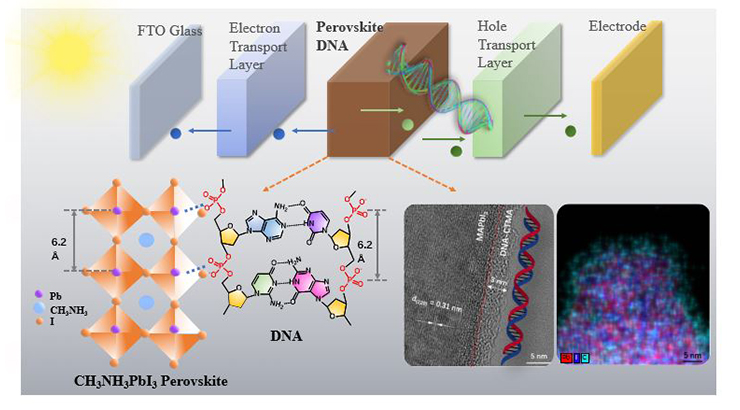DNA “Molecular Wires” to Improve Solar Cell Efficiency and Stability
ID# 2019-4911
Technology Summary
Deoxyribonucleic acid (DNA) not only functions as a genetic information carrier but also exhibits attractive long-range hole-transport properties, making it a promising “molecular wire” for hole conduction in optoelectronic devices. This technology leverages DNA’s hole-transport properties by bonding DNA with perovskite crystals to facilitate hole extraction and charge transport in high-efficiency perovskite solar cells (PSCs). As shown in the figure above, the DNA self-assembles around the boundaries of the perovskite crystals to form a core/shell heterostructure (bottom-right image; DNA is represented by cyan-colored carbon around the purple-colored perovskite). By incorporating hydrophobic DNA assembled along the grain boundary of the perovskite, power conversion efficiency and stability against environmental degradation is dramatically enhanced in this new class of biohybrid PSCs.
Application & Market Utility
While this technology has been demonstrated using solar cells comprising perovskite, it can be extended to other types of solar cells as well. The benefits of this technology include increased power conversion efficiency (i.e., improved to 20.63%), dramatically enhanced stability against environmental degradation (i.e., 90% efficiency retained after 30-day exposure to ambient air), and significantly lower cost due to the use of relatively inexpensive DNA instead of expensive alternative hole-transport materials (e.g., spiro-OMeTAD).
Next Steps
Seeking research collaboration and licensing opportunities.

